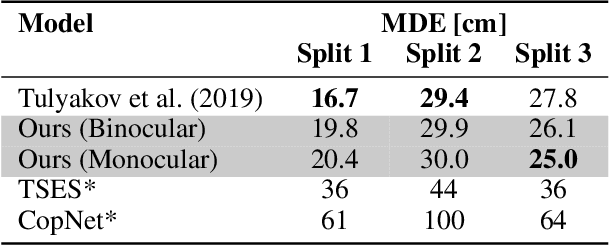StereoSpike: Depth Learning with a Spiking Neural Network
Paper and Code
Sep 28, 2021



Depth estimation is an important computer vision task, useful in particular for navigation in autonomous vehicles, or for object manipulation in robotics. Here we solved it using an end-to-end neuromorphic approach, combining two event-based cameras and a Spiking Neural Network (SNN) with a slightly modified U-Net-like encoder-decoder architecture, that we named StereoSpike. More specifically, we used the Multi Vehicle Stereo Event Camera Dataset (MVSEC). It provides a depth ground-truth, which was used to train StereoSpike in a supervised manner, using surrogate gradient descent. We propose a novel readout paradigm to obtain a dense analog prediction -- the depth of each pixel -- from the spikes of the decoder. We demonstrate that this architecture generalizes very well, even better than its non-spiking counterparts, leading to state-of-the-art test accuracy. To the best of our knowledge, it is the first time that such a large-scale regression problem is solved by a fully spiking network. Finally, we show that low firing rates (<10%) can be obtained via regularization, with a minimal cost in accuracy. This means that StereoSpike could be efficiently implemented on neuromorphic chips, opening the door for low power and real time embedded systems.
 Add to Chrome
Add to Chrome Add to Firefox
Add to Firefox Add to Edge
Add to Edge